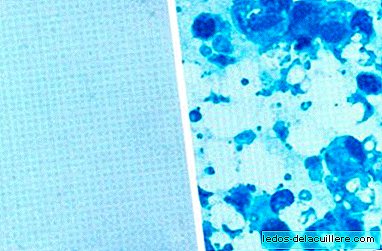
Puerperal infection is one of the postpartum complications, a septic inflammation, localized or generalized, that occurs in the first 15 days after delivery as a result of the modifications and injuries that pregnancy and childbirth cause on the genital tract.
This infection was frequently known as "puerperal fever", putting the emphasis on one of its symptoms, although this name is no longer considered adequate to describe it and we choose "postpartum or puerperal infection" that encompasses other important symptoms that we will enumerate below.
The cause of the puerperal infection It is an infection by bacteria normally found in a healthy vagina. These bacteria can infect the uterus, vagina, adjoining tissues and kidneys.
The infection usually occurs in the uterus and causes inflammation. The most common cause of postpartum infection is endometritis or inflammation of the inner lining of the uterus. There may also be phlebotrombosi, that is, inflammation of the veins of the uterus).
It can also affect the vagina, the vulva, the perineum (area between the vagina and the rectum, in the episiotomies), the cervix or the peritoneum (membrane that covers the abdominal organs, peritonitis).
Symptoms of the puerperal infection
- Fever and chills for two or more days after the first postpartum day (first day after delivery).
- Headache and muscle aches.
- Loss of appetite
- Smelly vaginal discharge: lochia usually have a smell similar to menstrual flow, a different smell may be a sign of infection.
- Stomachache.
- General discomfort.
Sources of postpartum infection
As we have noted, endometritis is the most common source of postpartum infection. Other sources of postpartum infections include: post-surgical wound infections (caesarean section or episiotomy), perineal cellulitis, mastitis, respiratory complications of anesthesia, retained products of conception, urinary tract infections (UTIs) and septic pelvic phlebitis.
Risk factor's
The risk factors that predispose to puerperal infection They are very varied:
General factors: all those conditions that diminish the organic defenses of women. During pregnancy, we have anemia, diabetes, and other diseases coinciding with pregnancy. Also socioeconomic factors, septic means, lack of prenatal care, and sexual intercourse during pregnancy.
The most important are factors in relation to the pathology of labor. Chorioamnionitis (infection of the placental membranes and amniotic fluid) leads to further maternal infection. Repeated touches, premature rupture of membranes, exploratory maneuvers, bleeding during childbirth, prolonged labor, tears of the birth canal, bleeding from birth and retention of placental remains also pose risks.
Factors in relation to obstetric operations: Caesarean section is today the main predisposing clinical factor due to its higher frequency. The risks increase if the intervention is performed urgently, and there are the risks of general anesthesia. Other interventions such as forceps (associated with genital canal tears) increase the risk of infection.
Infection is one of the postpartum complications that is usually cured with proper medical treatment after seven or ten days.
However, there may be some complications, such as blood clots in the deep veins of the pelvis or pelvic abscess, shock, scars, infertility and blood poisoning (although it rarely occurs, it can be fatal).
These are, in summary, the most important points that we should know about puerperal infection, a rare complication but that must be detected and treated immediately.












